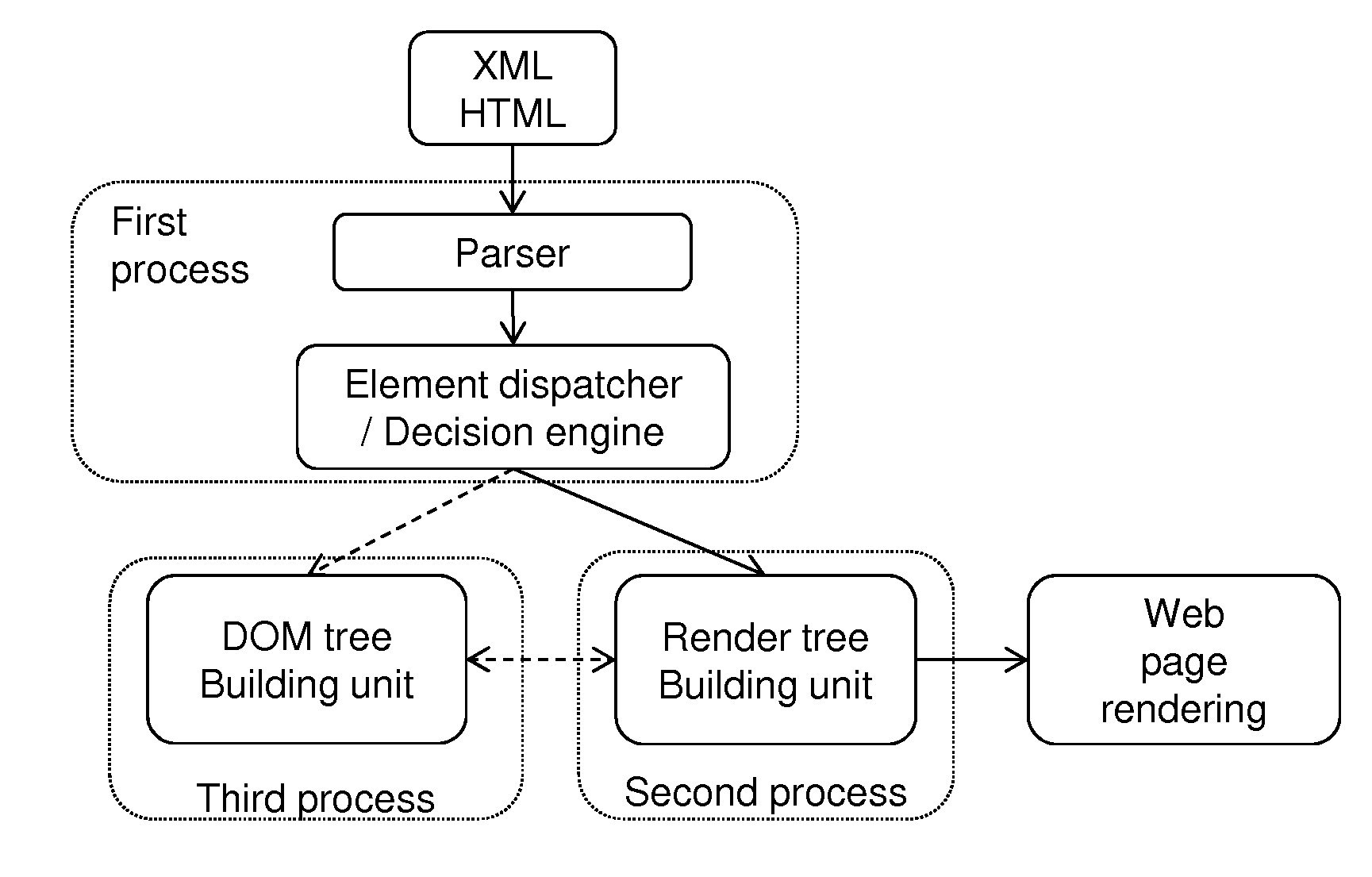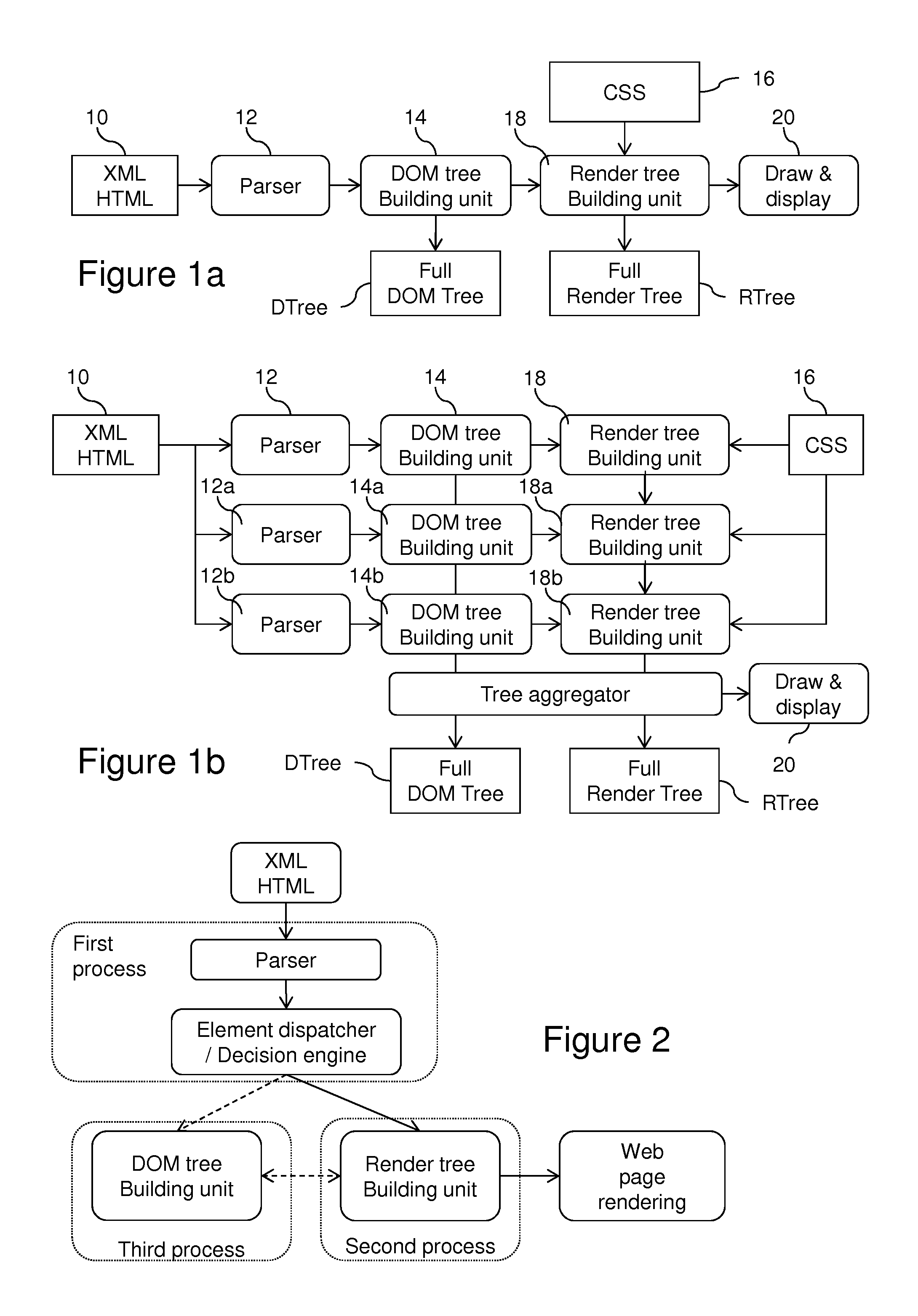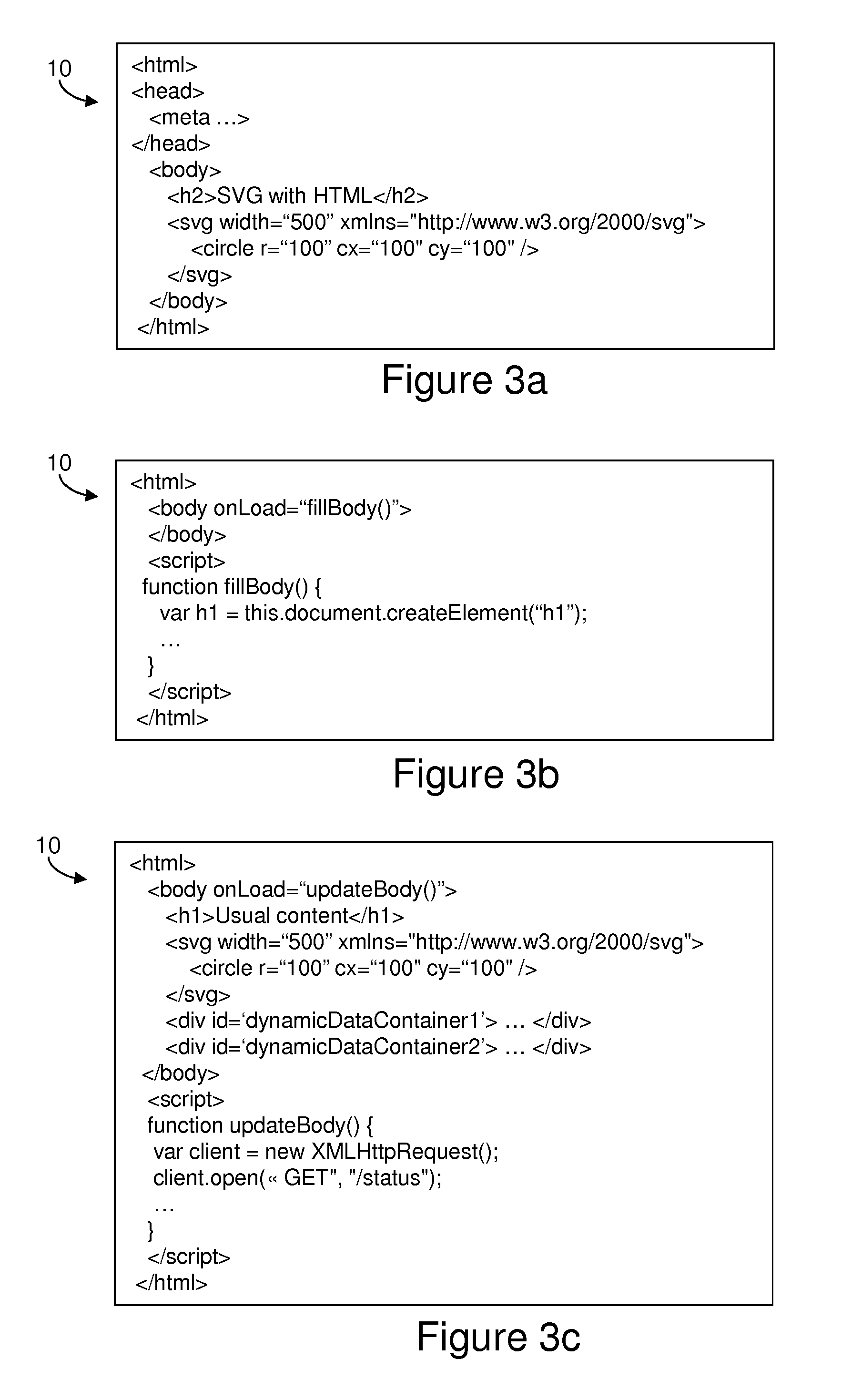Method for processing a structured document to render, and corresponding processor
- Summary
- Abstract
- Description
- Claims
- Application Information
AI Technical Summary
Benefits of technology
Problems solved by technology
Method used
Image
Examples
Embodiment Construction
[0146]FIG. 2 illustrates an overview of a processor 1 according to the invention for processing a structured document 10 of structured data to render, such as XML or HTML data.
[0147]First, the document 10 to render is input to a parser 12 which tokenizes the document into elements or “tokens” TK. Tokens may be XML or HTML events as defined above, a sequence of such events representing for example an XML or HTML element, or any set of elementary structured data of the document.
[0148]For the following description, it is considered that the token is a structured element of the document 10.
[0149]Based on the parsed element TK to process, an element or token dispatcher 13 comprising a decision engine decides whether that parsed element is to be sent to the render tree building unit 18 and / or to the DOM tree building unit 14.
[0150]The render tree building unit 18 selects the content to render from the parsed element TK, possibly enriched with style from CSS 16, and stores that content in ...
PUM
 Login to View More
Login to View More Abstract
Description
Claims
Application Information
 Login to View More
Login to View More - R&D
- Intellectual Property
- Life Sciences
- Materials
- Tech Scout
- Unparalleled Data Quality
- Higher Quality Content
- 60% Fewer Hallucinations
Browse by: Latest US Patents, China's latest patents, Technical Efficacy Thesaurus, Application Domain, Technology Topic, Popular Technical Reports.
© 2025 PatSnap. All rights reserved.Legal|Privacy policy|Modern Slavery Act Transparency Statement|Sitemap|About US| Contact US: help@patsnap.com



